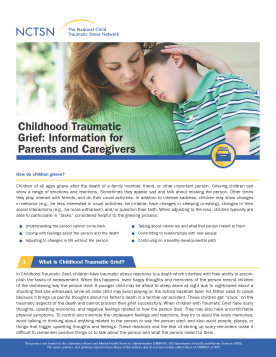
Childhood Traumatic Grief: Information for Parents and Caregivers
Provides information to parents and caregivers on Childhood Traumatic Grief.
A tornado is a violently rotating column of air that extends from a thunderstorm to the ground. They usually appear as a funnel or cone-shaped cloud, with wind speeds of up to 300 miles per hour. They can cause major destruction in their path. Sometimes tornadoes are preceded by heavy rain, wind, and hail; at other times they seem to arise out of relatively clear conditions. Sometimes people hear a loud roar or trainlike sound when a tornado approaches. Tornadoes have occurred in all fifty states and at all times of year. However, the Midwestern and Southern states have the greatest number, and the most violent tornadoes tend to be in the spring. Areas prone to tornadoes usually have a warning system to alert residents that they should seek safe shelter.
Being prepared beforehand is the best way to help children and family members recover after a tornado. To improve their preparedness, families should:
Knowing what to do during a tornado can help families feel more in control and take steps to increase their safety.
When a tornado warning is issued or a tornado is seen, families should:
Immediately after a tornado has passed, families should:
To address children’s reactions during a tornado, parents and caregivers can:
Tornadoes are unusual storms, as their path is often erratic. In the same neighborhood, some houses may be completely damaged while others will have not been impacted. While scattered destruction can be easier on the community than that of a flood or a hurricane (in that not all community resources may be used up), the inconsistent pattern of damage can cause feelings of guilt in those spared or unfairness in those recovering. Children may develop unusual ideas or myths about why a tornado did or did not hit their home.
In early aftermath, children may see anxiety and fear in parents and caregivers who are usually confident. They may have to move out of their area or seek temporary housing. They may have lost some of their treasured toys and memorabilia or have lost contact with those supports in their life (e.g., teachers, friends, neighbors) who provided them comfort. If they remain in the area, they tend to be exposed to reminders including rubble, debris, and changes in landscape (e.g., trees without leaves, broken branches).
As with other natural disasters, there will be a spectrum of reactions that children and families will experience. They may worry that another tornado will occur, feel troubled when reminded about the tornado (e.g., dark and low clouds, sounds of strong winds, siren test), and worry when separated from their loved ones. They may exhibit different behaviors (e.g., withdrawal from usual activities, increased anxiety level) or report more physical complaints. Children will react differently depending on their age, developmental level, and prior experiences. Responses also depend on the significance of secondary stresses they are exposed to (e.g., family changes, number of moves, family financial hardship). In general, most families will recover over time, particularly with the support of family, friends, and organizations. Since tornadoes impact communities erratically, some families will be able to return to their normal routines rather quickly, while others will have to contend with numerous hardships, losses, and potentially medical rehabilitation (if there were family members injured). Understanding children’s typical reactions will help ensure they get the right supports.
Children’s functioning and recovery will be influenced by how their parents and caregivers cope after the tornado. Children often turn to adults for information, comfort, and help. To assist children, discuss with parents and caregivers ways to:
In response to the recent tornadoes, the National Child Traumatic Stress Network has developed resources to help families and communities. These resources include:

Provides information to parents and caregivers on Childhood Traumatic Grief.
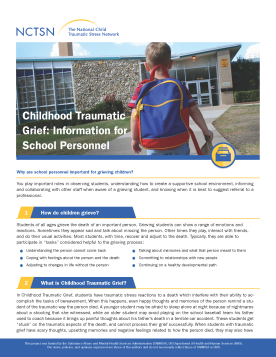
Offers information on why school personnel are important for grieving students. This fact sheet outlines how children grieve, what Childhood Traumatic Grief is, who develops Childhood Traumatic Grief, what traumatic stress reactions in Childhood Traumatic Grief can look like, the signs a student
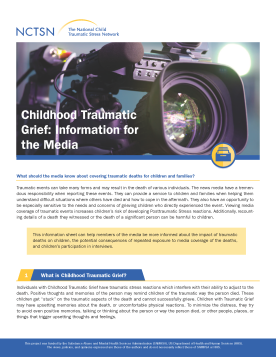
Provides information to the media on what to know about covering traumatic deaths for children and families.
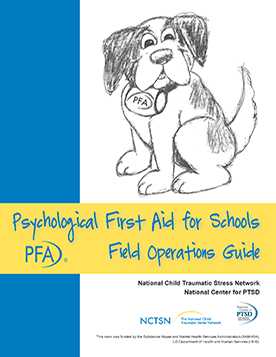
Provides guidance on responding to disaster, violence, or terrorism events using the Psychological First Aid intervention.

Helps parents talk to their kids about the disasters they may face and know how best to support them throughout—whether sheltering-in-place at home, evacuating to a designated shelter, or helping your family heal after reuniting.

Lists common reactions educators might see in the students with whom they work and suggestions on how they may help after community trauma.
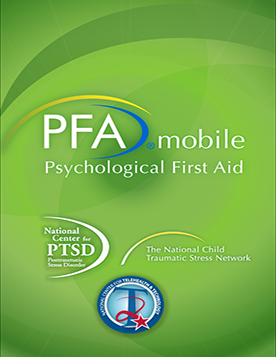
Lets responders review PFA guidelines and assess their readiness to deliver PFA in the field.
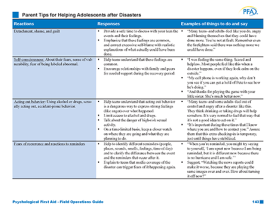
Is a handout from Psychological First Aid Field Operations Guide (PFA). This handout provides parents with common reactions after a disaster, ways to respond to those reactions, and examples of things you can say to your adolescent.
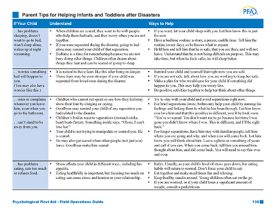
Is a handout from Psychological First Aid Field Operations Guide (PFA). This handout provides parents with common reactions after a disaster, ways to respond to those reactions, and examples of things you can say to your infants or toddlers.

Is a handout from Psychological First Aid Field Operations Guide (PFA). This handout provides parents with common reactions after a disaster, ways to respond to those reactions, and examples of things you can say to your preschool-age child.
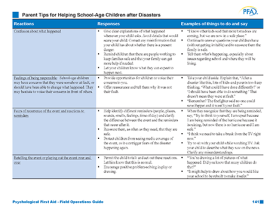
Is a handout from Psychological First Aid Field Operations Guide (PFA). This handout provides parents with common reactions after a disaster, ways to respond to those reactions, and examples of things you can say to your school-age child.
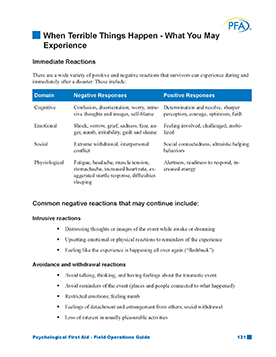
Is a handout from Psychological First Aid Field Operations Guide (PFA). This handout offers information on immediate reactions that may occur, common negative reactions that may continue, reactions to the death of a loved one, ways to cope, and strategies that don't work.